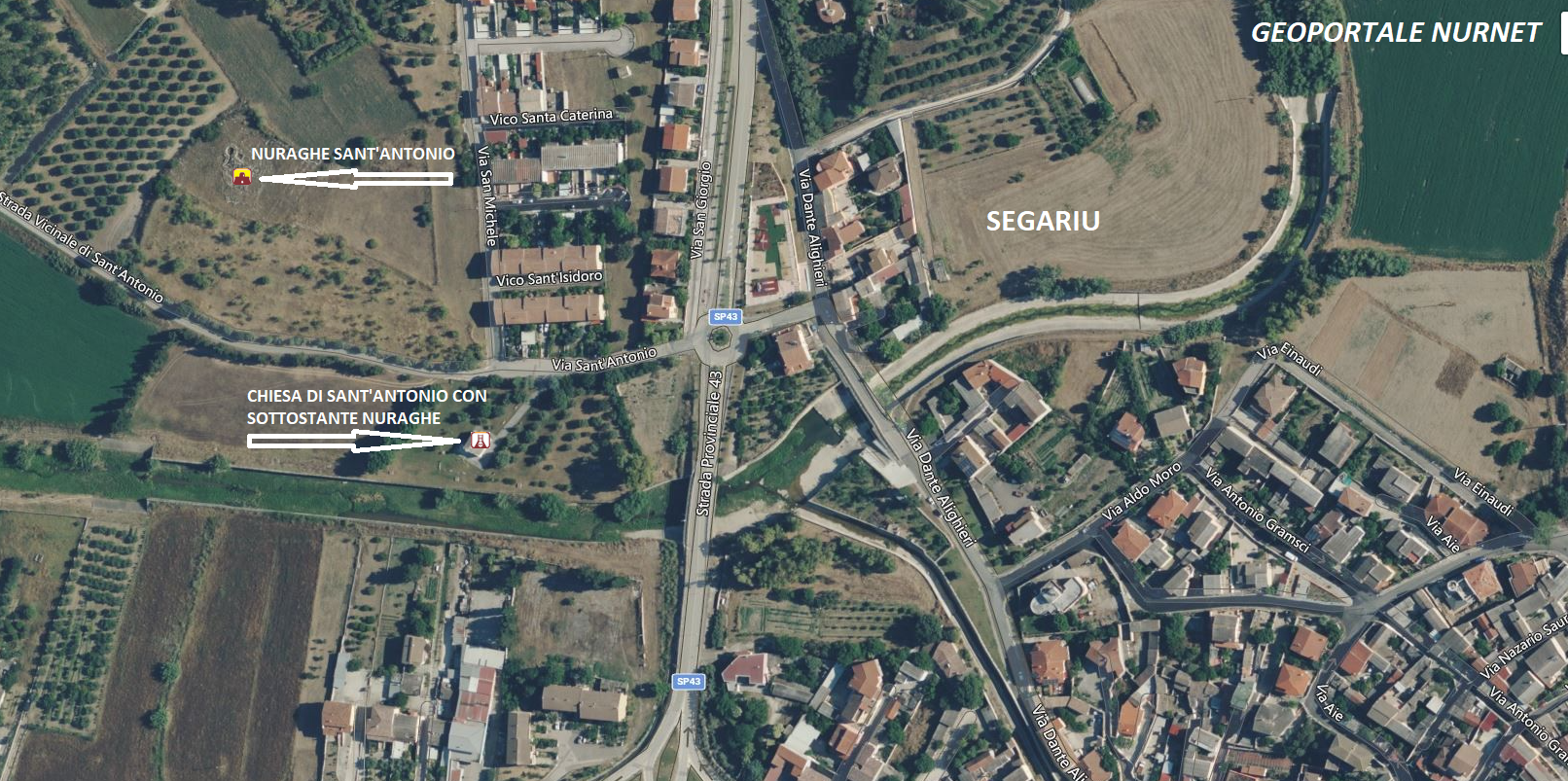The nuraghe S.Antonio di Segariu, located a short distance from the inhabited center, “has been the subject of numerous archaeological excavation campaigns, which have contributed to the legibility of the structures and the confirmation of the complex reuse that the area has undergone over the centuries.
Built with limestone and marl blocks, the nuraghe features a quadrilobate plan layout, with a central tower and four external towers oriented to the cardinal points.
The eastern sector adjacent to the nuraghe, and part of its internal sectors, have yielded clear evidence of a large and interesting settlement from the late Punic phase.”
Thus reads the site of the Ministry of Cultural Heritage and Activities and Tourism.
Equally interesting is the presence, near the nuraghe, of the homonymous church, built over a sacred well likely contemporary to the nuragic settlement.
This circumstance could be interpreted as an expression of continuity between different cultures, since water, whose worship was typical of the nuragic period, plays a primary role in Christian religion as well, being considered, in both the Old and New Testaments, a sign of the divine spirit. However, it could also be argued the exact opposite, in the sense that the construction of the church of S.Antonio over the sacred well could be seen as an intention to override pre-existing “pagan” cults.
Finally, a “secular” hypothesis is equally reasonable, in the sense that the masonry structures of the well could theoretically have constituted (but I have no evidence to support this last hypothesis) a convenient support base for the construction of the church, or part of it.
The photos of the nuragic complex Sant’Antonio are by Andrea Mura-Nuragando Sardegna and Marco Cocco. Those of the homonymous church and the underlying nuragic well are by Marco Cocco.










